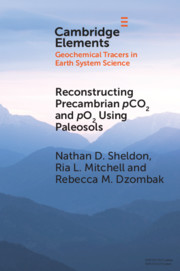Element contents
Reconstructing Precambrian pCO2 and pO2 Using Paleosols
Published online by Cambridge University Press: 02 February 2021
Summary
- Type
- Element
- Information
- Online ISBN: 9781108870962Publisher: Cambridge University PressPrint publication: 04 March 2021
References
Primary Sources
Secondary Sources
- 9
- Cited by



